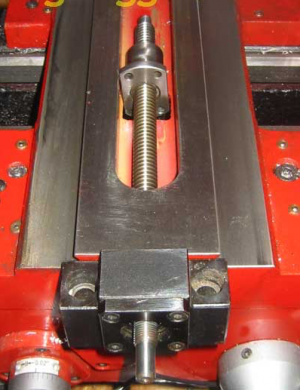- Joined
- Nov 9, 2018
- Messages
- 377
I've got a Clausing 5400 that I want to convert to CNC, but still want to use in manual mode. Currently it has a 5/8x10 cross slide screw. I know one issue with ball screws is they have to be continuously held somehow, or else they'll back drive. So, would a regular 5/8-10 cross slide and brass nut work OK with a CNC, or would I be better off converting to ball screw, and coming up with some way to lock the screws in manual mode?


